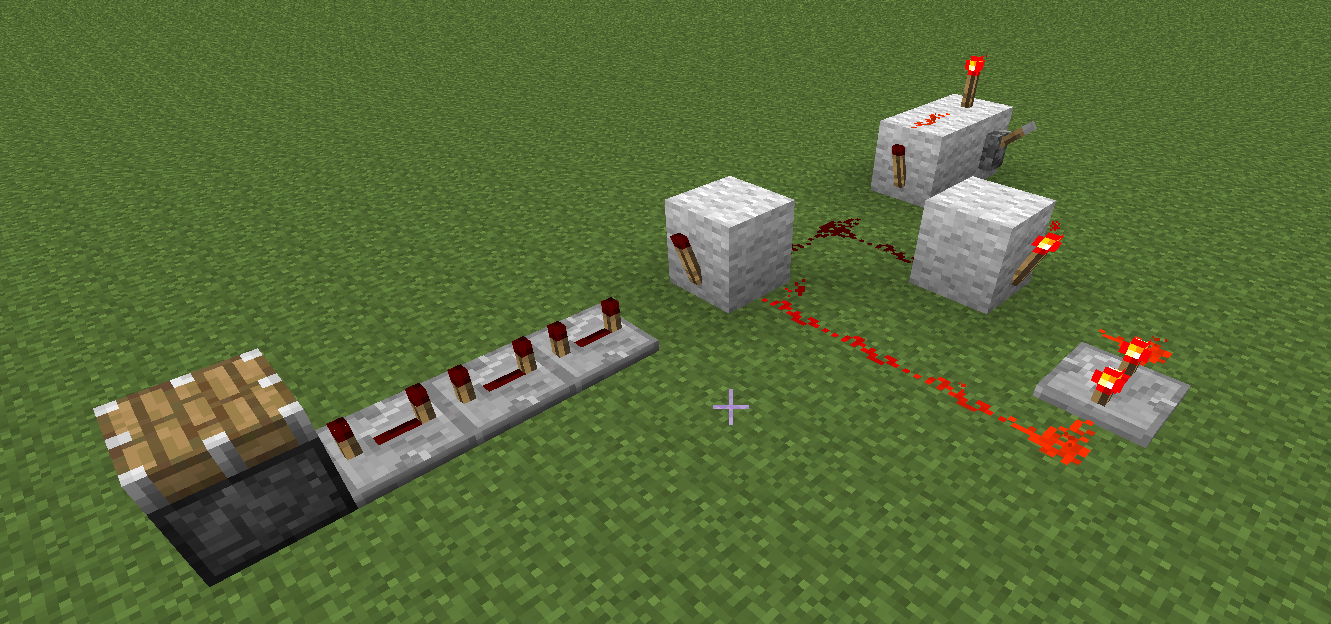I'm not sure if there's a simple way to do this, or even a way at all.
Basically what I have is a switch which is on, and two outputs.
The first output is very simple - it goes on when the switch is turned on, and off after a short delay when the switch is turned off. Easily achieved with redstone repeaters
The second output is more complex.
- When the switch is steady off, it has to be off.
- When the switch is steady on, it can be either on or off, it doesn't matter, apart from the first few seconds
- When the switch is turned on, the output must be off, at least for the first few seconds.
- When the switch is turned off, the output must be off, and then pulse on and off after a brief delay (which I need to be able to control)
If that makes any sense whatsoever?
Any suggestions appreciated
Jon


